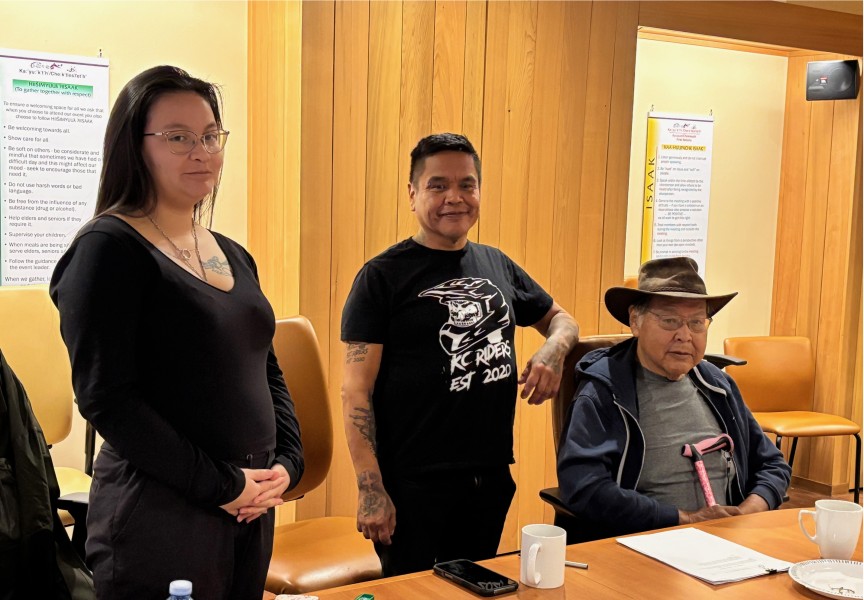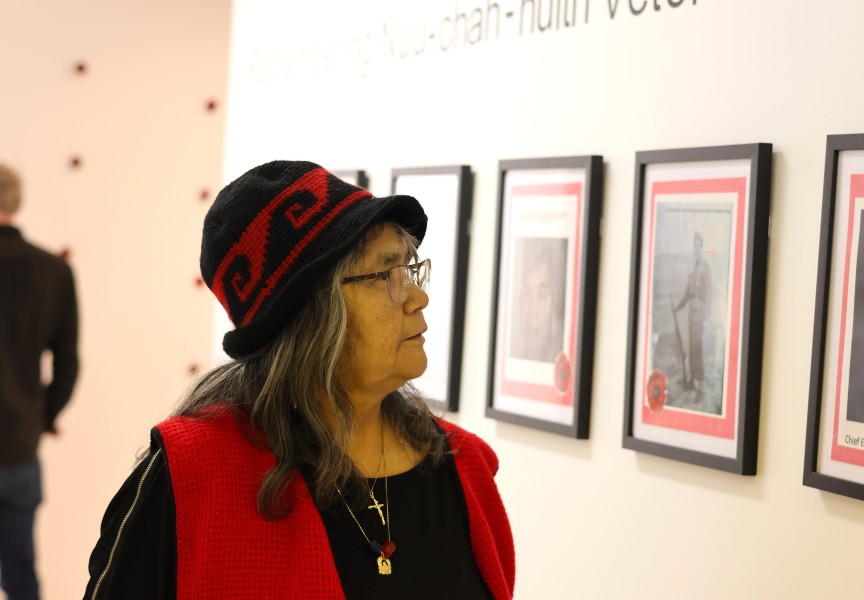Although September rain and cooler temperatures have lowered Vancouver Island’s fire danger rating to “very low,” the effects of British Columbia’s most severe forest fire season on record continue to be felt in the Village of Zeballos.
Citing “immediate danger to life safety due to potential debris falls or slides,” on Sept. 8 the small northwestern Vancouver Island municipality expanded an earlier evacuation order issued last month. That Aug. 18. directive required occupants of six properties to leave as the Gold Valley Main fire burned on the mountainside above the village; now several more homes have been ordered to evacuate due the slope’s resulting instability one month after the fire was ignited by lightning.
Due to the steepness of the terrain, it took days for the BC Wildfire Service to find a way to fight the fire on the ground. Ernest Smith watched the fire grow from his home, expressing concerns that many in Zeballos shared in a video he posted online showing the billowing smoke.
“The fire has spread and we’re really worried,” said Smith in the social media post. “Why are the firefighters not here, and why are the helicopters not here? We’re really worried about our property and our homes.”
Suppression was limited to helicopter drops in the days after an Aug. 11 lightning storm ignited forest fires across the north island - before ground crews from multiple agencies, including the Zeballos Volunteer Fire Department, were able to access the slope and battle the blaze.
A water bomber from the province was also able to make some drops in the containment effort. But like other communities affected by forest fires in Nuu-chah-nulth territory and throughout B.C., provincial resources were stretched thin as smoke from wildfires several thousand hectares in size cast a deep orange hue to the skies over other regions.
At the height of the fire season in mid-August, B.C. Wildfire Information Officer Ryan Turcotte addressed the response issue.
“It has been at times a challenge to get to all the fires at once,” he said during a media conference call. “We are prioritizing and making sure that we’re responding to areas that are at most direct threat to people and property.”
With 566 wildfires burning, the province declared a state of emergency on Aug. 15, a directive that gives government agencies like the RCMP and Emergency Management BC “the authority to take every action necessary to fight the wildfires and protect people and communities,” according to a press release. This marks the second consecutive year in over decade that forest fires prompted a state of emergency in B.C., after the government directive was in place for 10 weeks over the summer of 2017. Last year’s fire season saw 1.2 million hectares of forest burned, costing $568 million in suppression costs across B.C. This toll far exceeded any year to date until 2018, which has been witness to 1.35 million hectares of burned forest from 2,061 fires.
The extent of the province-wide burning has led local fire departments to take their trucks and personnel into the surrounding bush. In the Alberni Valley the Cherry Creek Fire Department joined provincial personnel to help control a blaze in the Beaufort Mountain range that broke out on Aug. 7, then three days later other crews were needed on the other side of the valley when the Arbutus Summit lit up over the Alberni Inlet shortly after midnight. Members of the Port Alberni Fire Department joined a crew from the BC Wildfire Service in suppression efforts.
In an address to city council in August, Port Alberni’s Acting Fire Chief Wes Patterson explained this his crew took to the growing Arbutus Summit blaze after they were logistically unable to respond to an earlier request from the wildfire service for help on the Beaufort range.
“On the Beaufort fire, they had asked for a water tender and a crew of 10 men,” he said. “We don’t have a water tender as the Port Alberni Fire Department, and I certainly could not put 10 men on a wildfire outside the city limits, so were not able to assist at that point in time.”
City councillor Jack McLeman supported using the municipal resources for a blaze well outside of city limits.
“I’m not too worried if our fancy fire trucks get a scratch on them, I think it’s more important that the town and the valley gets protected,” he said.
The firefighters’ efforts led the Tseshaht First Nation to present a print to the Port Alberni Fire Department in September as a token of appreciation, as well as offer a thank you to other local fire departments that took part in suppression efforts with the BC Wildfire Service.
With most of Vancouver Island under an “extreme” fire danger rating, the Arbutus summit blaze was the third incident in the Alberni Valley within one week. Due to the lack of lightning in the area, all of these fires are believed to be human caused, according to the BC Wildfire Service.
As the emergency operations director for the Tsesaht First Nation, Hugh Braker issued a notice for members to look out for signs of someone starting fires in the territory.
“We had a big worry about the possibility of a fire bug,” he said.
On the morning of the outbreak of the Arbutus Summit wildfire, the Tseshaht First Nation activated its Emergency Operations Centre, a measure that brings close monitoring of how the situation is developing. As the Tseshaht reserve is five kilometres as the bird flies from the wildfire, designated staff determined if an evacuation alert was necessary through regular contact with provincial agencies.
“We monitor and we constantly evaluate the potential need for evacuation,” said Braker, noting that elders and those on the reserve without vehicles are considered. “Tseshaht is on the west side of the Somass River, and there’s only a two-lane bridge that connects the west side of the river to the east side. In a significant emergency, you could count on hundreds of people wanting to get across that bridge at the same time.”
An evacuation alert was not called, but the mid-August fires filled the Alberni Valley with smoke. Like many parts of Vancouver Island, the region’s air was rated 10+, bringing a “very high health risk” for those engaged in outdoor activity, according the BC Air Quality Index.
Part of the reason for concern is that smoky air inhibits the lungs’ ability to get oxygen into the blood, said Dr. Bonny Henry, a provincial health officer. By mid-August she noticed far more visits to emergency departments due to breathing and cardiovascular issues.
“Normally healthy active people can have symptoms during wildfire smoke exposure which many of us have experienced: runny nose, eye irritation, sore throat, cough,” Henry said. “We also notice with the air, when it’s been around for a while, can bring risk of some infections, particularly pneumonia in older people and ear infections in children.”
Despite the smoky haze that has become a regular occurrence in British Columbia each summer, Henry said that temporary exposure to wildfire smoke does not bring the same long-term health risks as prolonged exposure to other air pollutants, such as vehicle exhaust and industrial emissions.
“Despite that it’s been going on for several weeks, we really do see this as a short-term exposure,” she said. “For the vast majority of people, when the sky is clear, the symptoms of irritation and shortness of breath are going to go away and most of us will be absolutely fine.”
It might be easier to breathe during this rainy September than last month, but the prolonged risk of falling debris in Zeballos will serve as a reminder to other communities how a randomly ignited wildfire can bring hazards long after the smoke clears.







